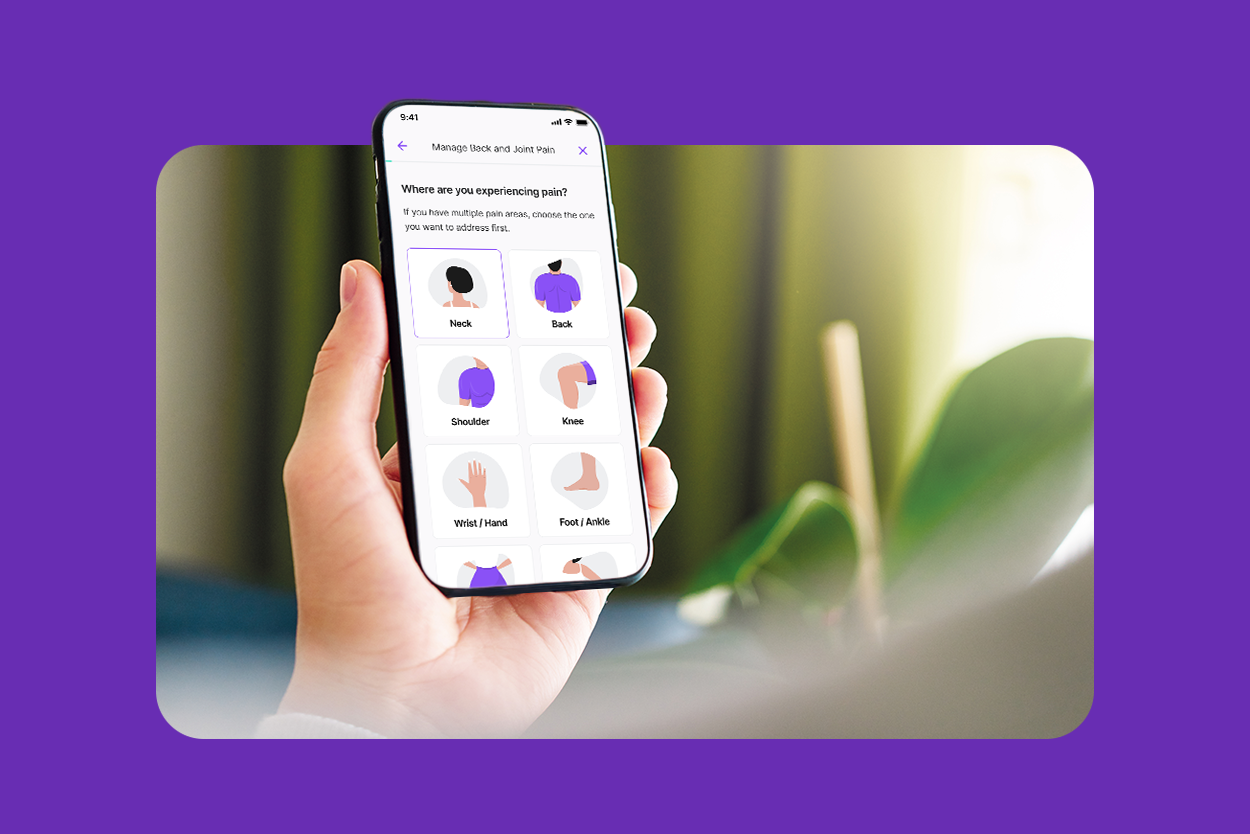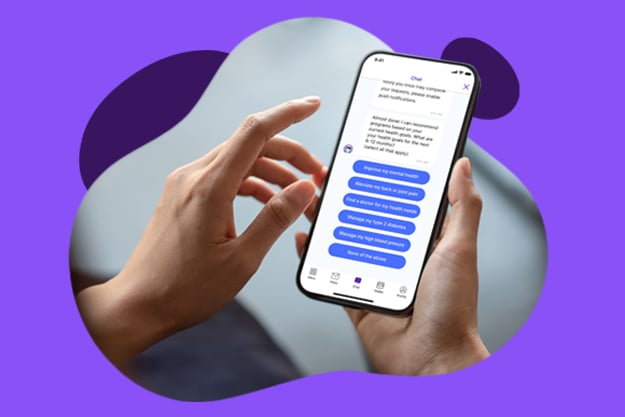Better Benefits Communication is Key to Helping Employees Manage Care
During the pandemic, we heard a lot about the harmful effects of delayed care. Employees who were afraid to see their doctors in person skipped...
Connected Navigation Platform
Guiding to high-value care
Behavioral Health
Foster a mentally healthy workplace
EAP
Supporting holistic wellbeing
Virtual MSK Care
Reimagining musculoskeletal care
Virtual Primary Care
Powered by smart navigation
Surgery Centers of Excellence
Best-in-class surgical outcomes
Virtual Urgent Care
Immediate care, any hour of the day
Chronic Care
A new approach to chronic care
Integrations
Flexible to any strategy
5 min read
 Melanie Powell
:
September 10, 2025
Melanie Powell
:
September 10, 2025

Let’s address the real problem. The US healthcare system is confusing, overwhelming, fragmented and frustrating.
For employees, the consequences of this unapproachable system can range from mild annoyance to full-blown financial devastation. For employers, the financial stakes are also high. Companies spend 30% of total headcount expenses on benefit programs, yet costly decisions and a nontransparent system make it harder than ever to see a positive return on that investment.
Let’s take a look at the problems that exist and why care navigation is essential when battling these issues, especially in an increasingly virtual landscape.
Recent data from the Kaiser Family Foundation (KFF) reveals that in 2024, it cost employers in the US $8,951 to insure one single employee, and a staggering $25,572 to insure a family. That represents a 6% and 7% increase over the previous year, respectively. And to put that in perspective, workers’ wages only increased by around 4.5% in the same year.
At the same time, enrollment in high-deductible health plans (HDHPs) is increasing year over year. This is raising the stakes for employee finances. A 2024 KFF study revealed 29% of covered workers enrolled in HDHPs, up from 20% in 2015.
According to NAAL, only 12% of US adults have a “proficient” level of health literacy, which is a shockingly small percentage.With that level of comprehension, it’s easy to see why employees might be having trouble understanding their benefits. On top of that, employees are having to learn the differences and terminology related to virtual care options.
Recent research underscores the crisis in care accessibility, even for the insured. A 2024 survey found that 40% of U.S. workers with employer-provided health insurance delayed care due to costs. The Integrated Benefits Institute reports 58% of employees postponed necessary medical care due to cost or insurance barriers.
And among those delaying care, many also neglected primary, dental, mental health, vision, or reproductive services. With more virtual and in-network options available than ever, it’s critical that employees clearly understand where to go for high-value care.
For 2025, out-of-pocket maximums for families may reach as high as $18,400, yet the average American doesn’t have $400 in savings to cover a minor emergency expense. Low health literacy is often associated with increased and repeated emergency room visits and worse health outcomes over time. This is also an extremely expensive way to receive medical care, which puts employee’s finances at much greater risk as well.
Employers who want to lower their skyrocketing healthcare costs don’t need a one-off, cost-containment measure or a new wellness program. They need a better way to help their employees get care. Point solutions won’t solve the problem, and education alone isn’t enough to prompt employees to make smarter healthcare choices. To truly drive behavioral change, employers need a more holistic, approachable tool. One that helps people identify, access and connect them with the care they need, when they need it.
They need a care navigation solution to help navigate the healthcare landscape.
Employees who don’t understand their benefits are likely to turn to more costly options for care. For instance, they may choose a hospital imaging facility over a lower-cost standalone facility, simply because it’s in the same hospital network as the prescribing provider.
Lower health literacy is also associated with higher rates of ER visits. Emergency room visits typically cost more than outpatient urgent care facility visits, yet employees who don’t know where to find urgent care may turn to these solutions first. It’s estimated that $18 billion could be saved annually if patients with non-emergent conditions chose urgent care over the ER.
With a care navigation solution, employees benefit from tools that make it easy to find the right care at the right time. This includes on-demand support and care redirection from our healthcare concierge team, plus steerage to appropriate virtual and in-person care. Depending on available benefits, that could mean directing employees to virtual urgent care, Rx Savings, onsite clinics or specialty care such as fertility solutions or cardio-metabolic care.
HealthJoy works to confront long-term healthcare spend across the entire employee population. High-cost claimants who activated HealthJoy experienced 21% lower healthcare spend than those who didn't activate HealthJoy. This goes a long way to helping employers combat rising healthcare costs, and to see positive return on their investment in employee benefits.
A smart care navigation solution can remind employees to seek preventive screenings, which can improve healthcare outcomes through early detection. Employees who don’t understand their benefits are avoiding or delaying care, and that leads to worsening health outcomes over time.
Delaying cancer screenings or other routine health checks leads to worse health outcomes for employees and much more expensive healthcare claims for employers down the line. KFF reports that in the last 12 months, two in ten adults (18%) have either skipped or delayed seeking medical care due to cost. But the reality is, by putting off care, the cost will be much more later – physically and financially.
Encouraging employees to engage in preventive activities is about approachability and accessibility. Employees put off these activities for myriad reasons, including cost, fear, forgetfulness, lack of time and low understanding. A care navigation solution breaks down these barriers. It not only reminds employees to take care of themselves, but also shows them how to do so. The right connected care experience can seamlessly transition employees from a push notification to scheduling an appointment without ever moving to another app, site or point solution. With tools like live healthcare navigation support and case management, they never have to walk through their healthcare journey alone.
A care navigation solution isn’t just about finding savings on big-ticket items, like surgery or imaging. It can also prompt engagement with your preventive measures, like Virtual MSK Care, Virtual Urgent Care, and more. These programs head off higher costs, but are only effective if employees actually use them.
When you implement a fully connected navigation platform that’s integrated with your entire benefits package, you’ll gain access to tools that make your wellness benefits more approachable for employees. When they open the app, everything is clearly displayed and push notifications can draw attention to your high-priority initiatives more effectively than emails. With higher utilization and engagement, your wellness programs will yield greater ROI and boost employee satisfaction and wellbeing. In other words, a care navigation platform can make all your benefits more valuable.
The results speak for themselves
When every piece is working together to make health and wellness easier, a care navigation solution’s effectiveness should speak for itself. With the right solution, self-funded companies will notice a decrease in healthcare spending, as well as improved satisfaction, and increased benefits satisfaction and utilization.
How powerful are the results? Member engagement in our smart care navigation solution reduces healthcare spend by 21% for high-cost claimants. And we see a 2-3x increase in point solution utilization – not to mention the many administrative hours saved by HR teams.
With a connected care navigation solution at the center of your benefits experience, employees can intuitively find the right care at the right time. Live, personalized guidance and an approachable interface make a confusing and unbundled system more human and much more cohesive. And when employees can make smart healthcare decisions with ease, healthcare costs go down – for them, and for your company.
The HealthJoy benefits wallet helps members get the facts, contact information and plan details needed to make smart decisions. And by only showing members the plans and resources that are applicable to them, we improve the benefits experience by adapting to each individual's unique wants and needs.
The benefits wallet can also mean a smoother transition when you update or roll out new benefits. This is especially key when teams are remote and you don’t have traditional in-person touch points. Employees don’t have to worry about where to find these changes because the benefits wallet within the HealthJoy app serves as a single source of truth for their plan.
An expected change in the yearly plan design has the potential to create confusion and a flood of questions for HR. The HealthJoy app and our benefits wallet eliminates this problem by keeping the plan details updated in real time.
HealthJoy’s smart care navigation platform bundles an unbundled benefits experienced by bringing all your benefits together, whether virtual or in-person. With flexible integrations and the option to tailor the employee experience around your existing offerings, we bring the power of connected care to your entire benefits package.
Your employees will discover the best in-network providers, virtual care and savings opportunities so they can lead happier, healthier lives.
Learn more about how HealthJoy can help you today.
Disclaimer: This is a revised version of a blog that was originally published in 2022.

During the pandemic, we heard a lot about the harmful effects of delayed care. Employees who were afraid to see their doctors in person skipped...

For an employee, navigating the healthcare system is just a series of difficult decisions. With unclear pricing and confusing deductibles, it’s...

HealthJoy is a connected healthcare navigation platform. But what do terms like connected care and connected healthcare navigation mean? And how can...